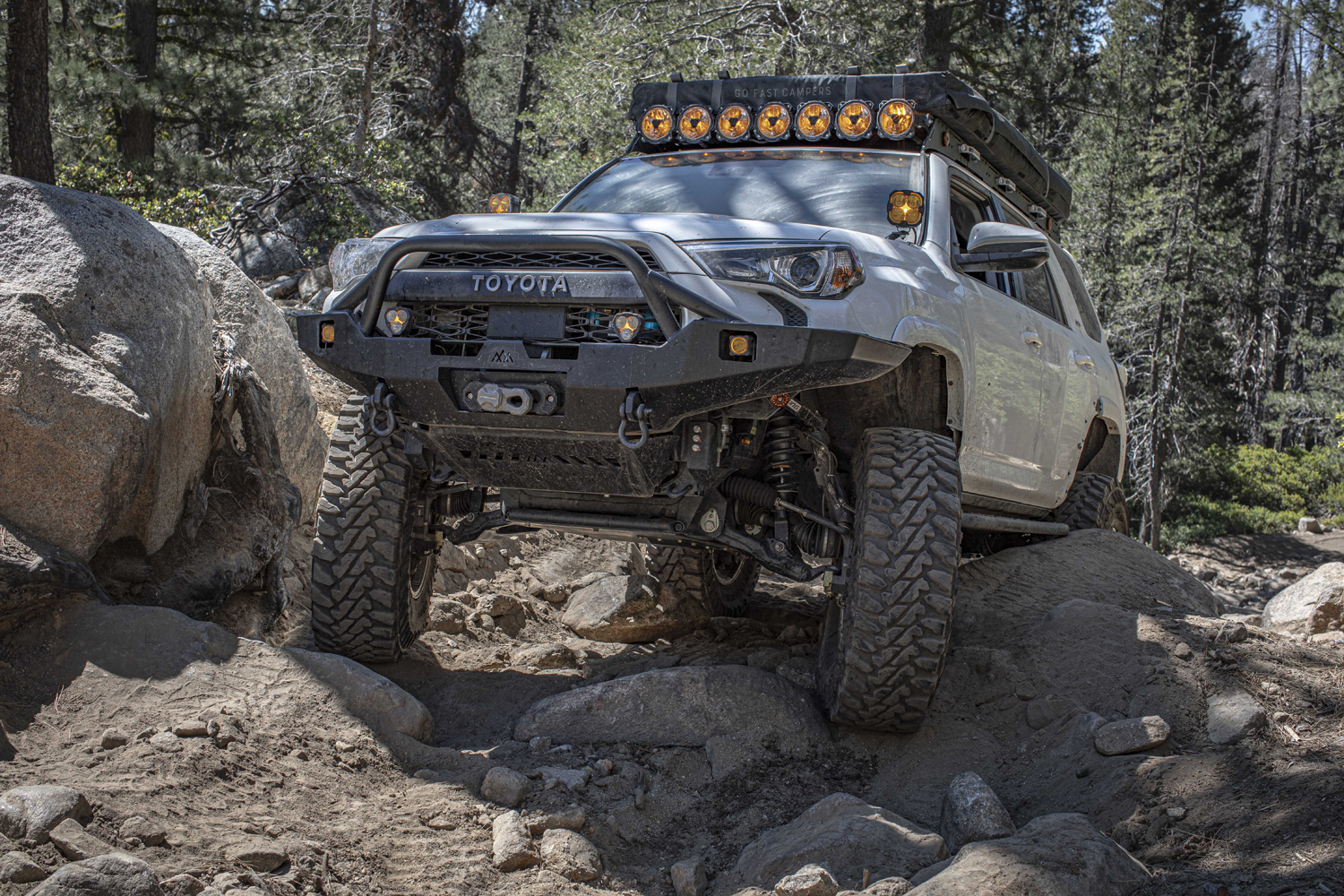
We already launched the product overview post which covered a detailed look at the coilovers. If you have not read that post, go check it out.
If you’re unfamiliar with the shocks, Dirt King worked closely with a Toyota OEM shock valving/tuning engineer on the specific valving and tuning of their new shock.
The Goal
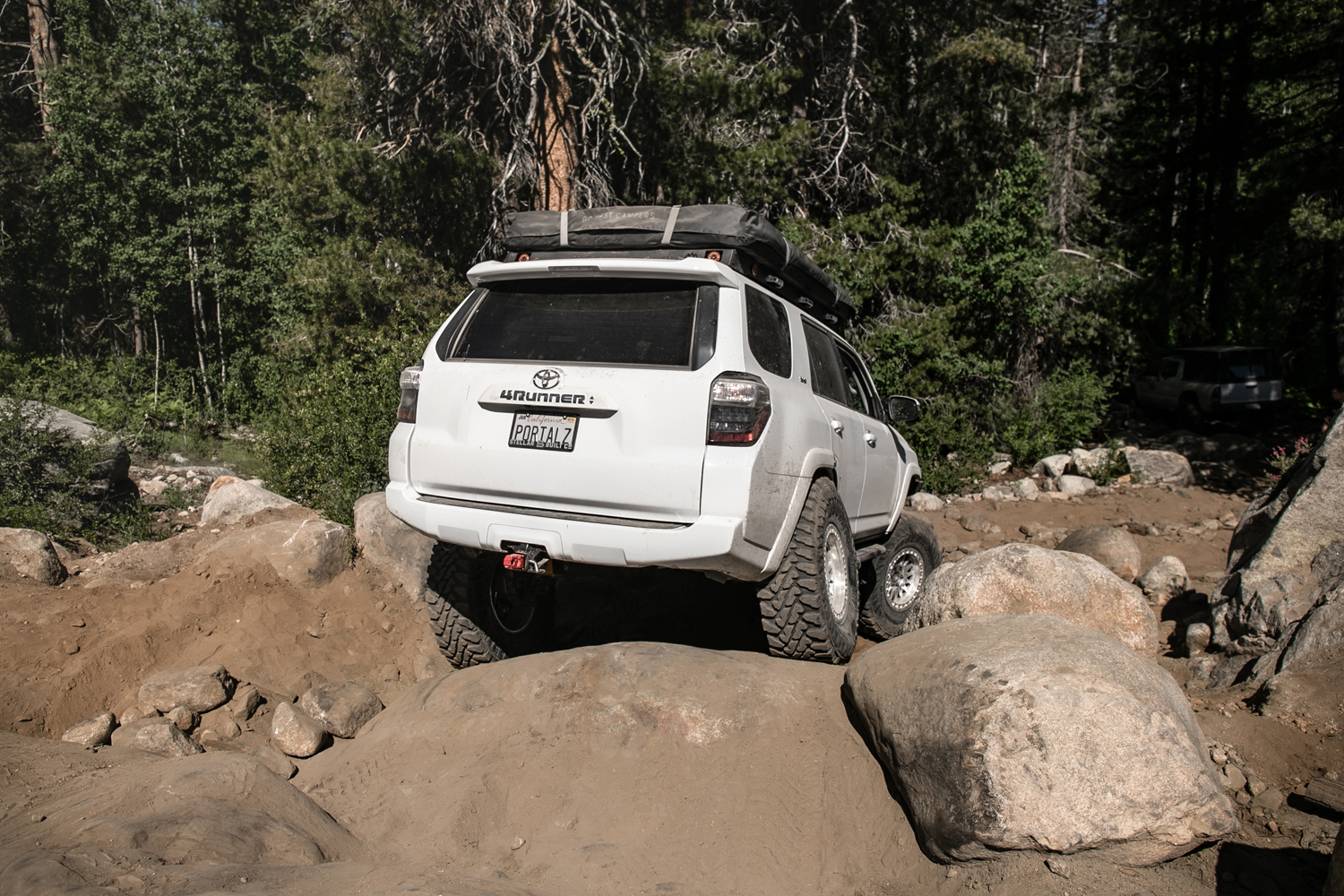
The goal was to bring 4Runner and Tacoma owners the best out-of-the-box driving experience for both on-road and off-road use – with adjustability. After Dirt King spent years of manufacturing suspension components, they became extremely knowledgeable at pairing shocks with their kits. And for the Toyota Engineer, well I think that one speaks volumes on its own. What you’re looking at is the result. Over two years of R&D, thousands of hours in real-world testing performance both on and off-road in addition to countless shock bodies being tested against the elements.
They wanted impressive off-road performance at speed while offering superior comfort on-road for daily driving and I can confidently say that after testing these shocks for the last couple of months, they achieved just that.
Find It Online
- DK 2.5″ Series Shocks: Check Price
Table Of Contents
What Valving Are You Looking For?
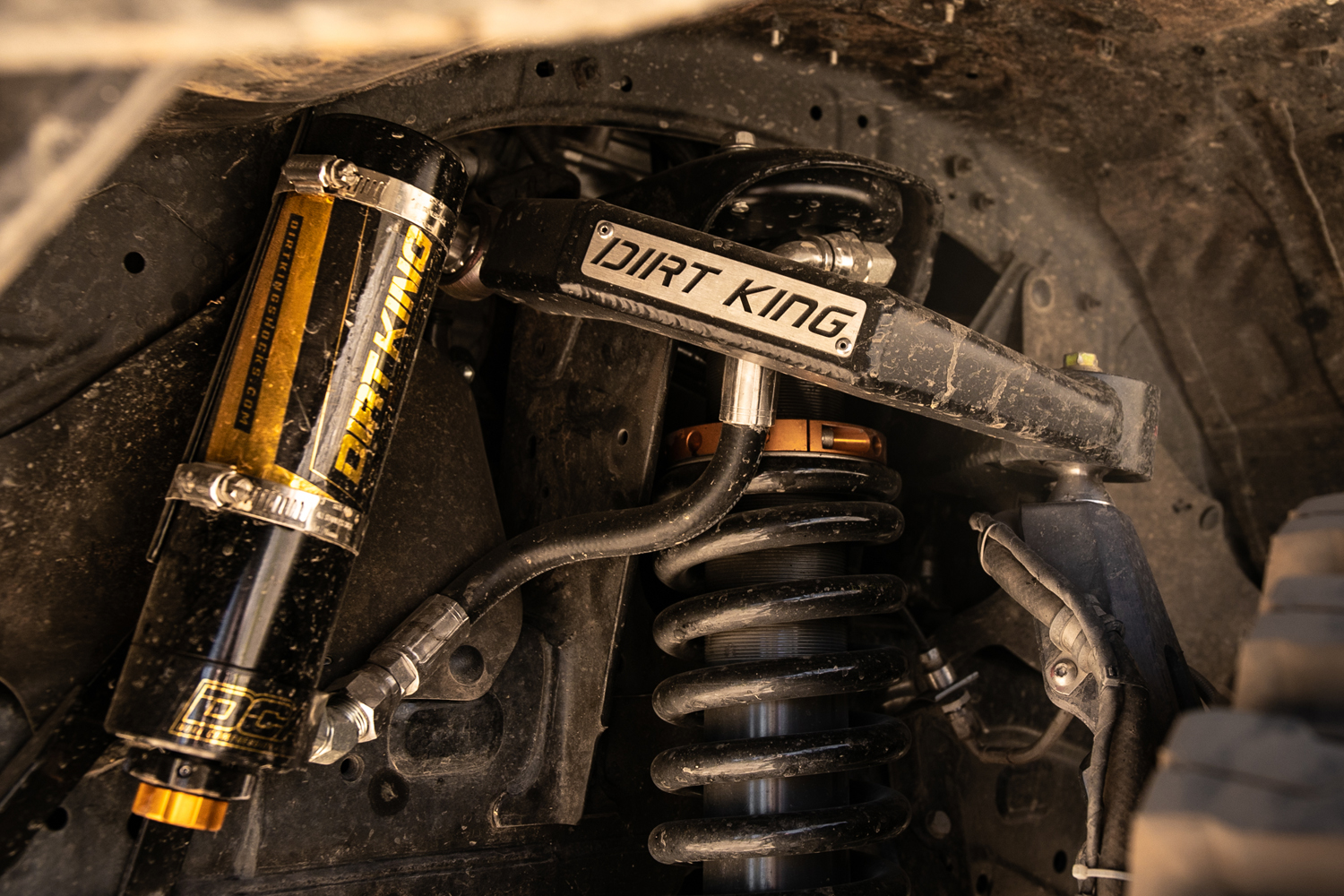
The new DK DCAs deliver… at least to my liking.
For a little context, I’ve run a wide variety of shocks. Some of the big names include the Fox Race Series, OME BP-51s, Bilstein 6112s/5160s, OME Nitrochargers, Eibach Pro Truck, Falcon Tow/Haul, Icon 2.5 Extended Travel and a few others. I have also driven rigs on KINGs, although I have never owned a set on one of my rigs. Out of all the shocks I’ve tested over the years, I tend to gravitate towards a softer shock with a progressive or linear valving/tune as they soak up the smaller bumps, chatter, and ruts around town in the ride zone. They also tend to handle better through rough fire roads at lower speeds (5-15mph) than a firmer shock, such as an Icon with digressive valving.
Shock “feel” usually falls into two categories; firm or soft. While some shocks are very firm (think race car suspension), others are very plush and soft (think Cadillac suspension). The type of shock performance and feeling on-road is very subjective. Some guys like it firm and rigid, while others like it plush and comfortable.
Firm suspensions offer impressive handling through corners and prevent common issues with the 4Runner such as body roll and nose dive on braking. The downside to a firm suspension is that you tend to feel everything on the road; rocks, debris, chatter, and all the small bumps. It can make for an uncomfortable ride depending on the terrain type, speed, PSI in tires, etc.
Soft suspensions offer great comfort when driving daily. They tend to soak up everything on the road; rocks, debris, chatter, and small bumps. The downside to a softer suspension is that you may feel more body roll and nose dive on braking.
DK On-Road Performance
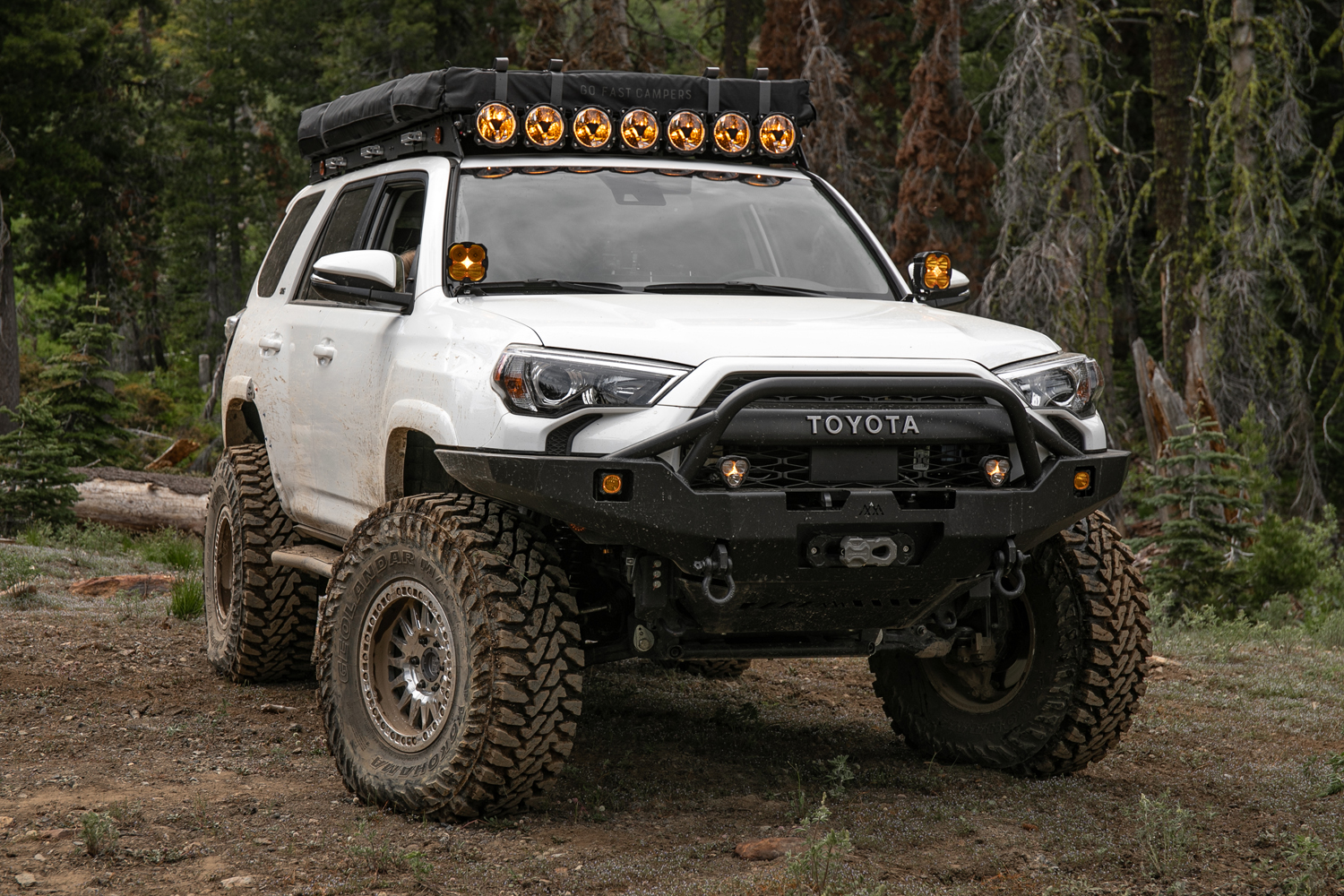
Baseline off-the-shelf, the DK DCAs feel somewhere between a BP-51 and a KING – both very plush on-road straight out of the box. If you like your suspension race-focused and extremely stiff for daily driving, this is not the coilover for you.
That said, these DK DCAs sit in an interesting place compared to all the shocks I’ve tested in the past. While they’re very plush, pillowy, and comfortable on the road, they offer that slight bit of stiffness needed to combat body roll and nose dive upon braking. This is all handled by the internal shock progressive valving, not the springs. Speaking of springs, the DK DCAs feature 700 lbs out of the box, instead of the industry standard of 600 lb – 650 lbs. The 700 lb spring rate requires less preload, provides greater adjustment before coil bind, and offers support for additional weight mods without changing springs. The heavier springs also provide a faster spring rate ramp to prevent harsh bottom outs on big hits so it performs very well off-road (we’ll get to that later).
I think DK has nailed it for extremely comfortable on-road performance. They are very close to what a KING shock feels like on the road… very soft out of the box. They provide a super plush pillowy on-road feeling all while staying planted on corners.
If you feel the suspension is too soft, you can always decrease the amount of oil flowing in the shock by simply adjusting the Dual Speed Compression adjusters.
Compression Adjusters – How Do They Work?
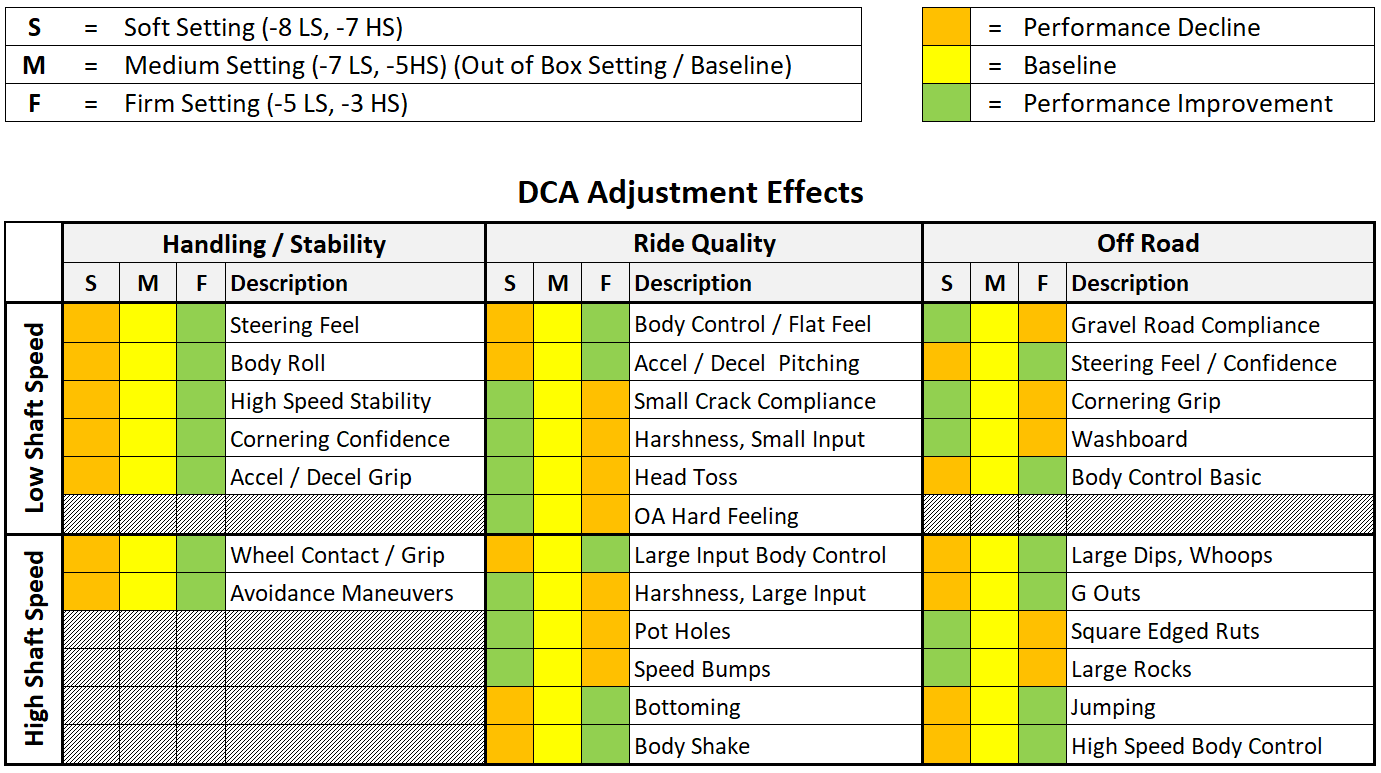
Factory Dirt King Settings:
- Low Speed Compression (gold knob): 7 turns out.
- High Speed Compression (black knob): 5 turns out.
For the full Dirt King Dual Speed Compression settings and user guide, check out this link.
If you’re unfamiliar with how high-speed and low-speed compression adjusters work, I’ll catch you up. The high/low-speed adjusters have nothing to do with the speed of your vehicle, but instead, the speed at which the shock is compressing. However, sometimes the two go hand in hand.
When adjusting the low-speed dial, you’re controlling oil flow under slower compression events. Some examples might include daily driving around town, cornering maneuvers, or driving through a mellow 5-foot washout in the road. Those are all slow shock movements. For low-speed, you might want to set that to its firm setting to control body roll and to generally improve daily driving.
When adjusting the high-speed dial, you’re controlling oil flow under higher-speed compression events. Some examples might include hitting a pothole unexpectedly at speed or hitting whoops in the desert at high speeds. That type of driving typically yields faster shock events. For high-speed, you might want that a bit softer to soak up the bigger hits at speed.
DK Adjusters – What Did We Change?
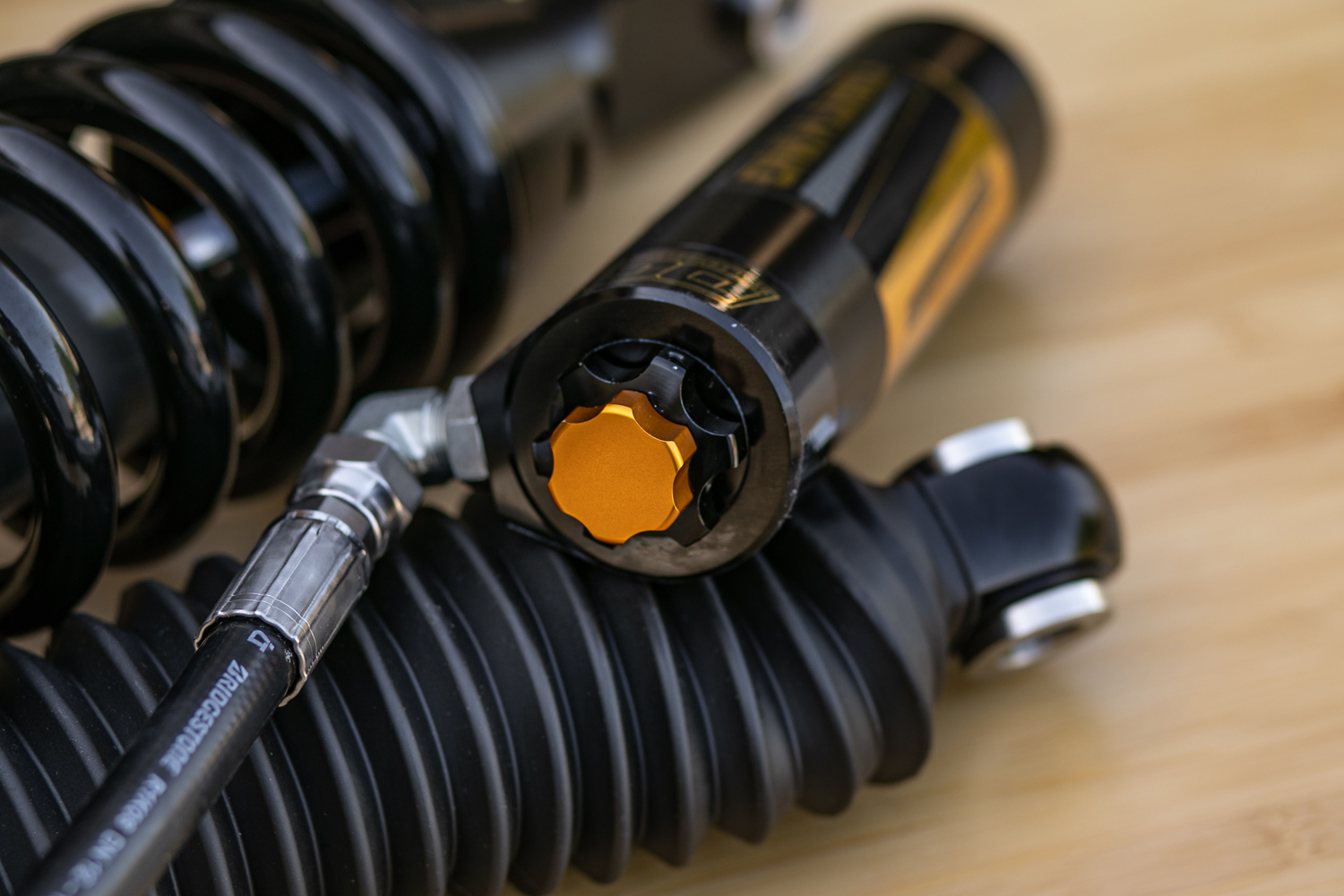
We did play with the compression adjusters a bit for an on-road performance handling test. We dialed the low-speed adjuster from its default out-of-the-box setting to the highest (most firm) setting to see how much of a difference it made. At the highest, most firm setting, the DK 2.5s did firm up quite a bit around town. Generally, they performed better through cornering which provided less body roll and very little nose dive upon braking.
The coilovers still offered a similar plush pillowy feel as felt out of the box, it was just tightened up a bit. I’m currently on this setting now and have not changed it back to its default setting. I think the firmer setting on the low-speed compression adjuster is working better for my truck as it has more weight than what the shock was intended for, a bone stock truck.
I’m running portal axles, full armor, a rooftop tent, a roof rack with a 35lb light bar, and a plate system with a fridge. Because of all the added weight and increased center of gravity due to the portals, a boost in stiffness for low speed is needed.
The point here is that there was a noticeable difference in how the 4Runner handled on-road over its out-of-the-box settings. Whether you have a stock truck or an overland rig loaded with weight, the DK 2.5″ DCAs will allow you to dial in your performance.
Regardless though, it will remain a pretty comfortable on-road feeling.
DK Off-Road Performance
We tested the shocks through a variety of terrain types on a recent 5-day wheeling trip out in the Sierras. The shocks saw everything from fast whoops to technical rock crawling and everything in between.
The compression adjusters were left as is, straight out of the box for all off-road testing.
Getting to the trail on rough fire roads was very comfortable. The progressive valving soaked up all the little rocks, tree roots, ruts, and small washouts at 5-15mph with no problem. I’ve never had a set of coilovers handle the low-speed stuff on fire roads this well. They provided so much confidence that we sped up to about 30mph through the fire roads and the suspension just continued to eat everything. Fire roads suck in general so it’s nice to have a shock that’s soft at the low speed and starts to adapt as shock stroke speed increases as well. The coilovers and rear shocks just at through the chatter and small bumps which is nice to have on a 30-mile stretch of fire road before you even get to the trail. All in all, a killer performing shock out of the box for fire roads at low speeds under 20mph. Very impressed with this portion of the test off-road.
For the high-speed stuff, we hit a big stretch of open land out in Carson Valley with big washouts and huge sweeping corners. We got the 4Runner on portals with 37″ tires up to 70mph thanks to the supercharger and the Dirt King shocks were very smooth through 1′ – 2′ washouts. The compression felt smooth and the rebound felt controlled. With very similar on-road characteristics as KING shocks, I’m not surprised they performed this well at speed. I’ve never been a big go-fast guy but if I was, these shocks wouldn’t disappoint.
For technical rock crawling, the shocks did what they were supposed to but the adjusters needed to be moved around. Out of the box, the compression felt very smooth when bumping it over rocks at speed however the slow-speed compression when dropping off ledges did buck a little bit. Also when alternating from rock to rock, we did notice quite a bit of body roll. That could also be attributed to the higher center of gravity on the portal axles as well. Regardless, when the shocks saw a fast event, the suspension was smooth. When the slow events occurred like slowly alternating from climbing up one rock and dropping off another, the suspension seemed too loose thus causing the body to roll.
Again, this was all done using the off-the-shelf settings – which were not bad given the terrain we threw at them.
All in all, a very versatile shock that can be fine-tuned for high and low-speed compression events.
Build Quality
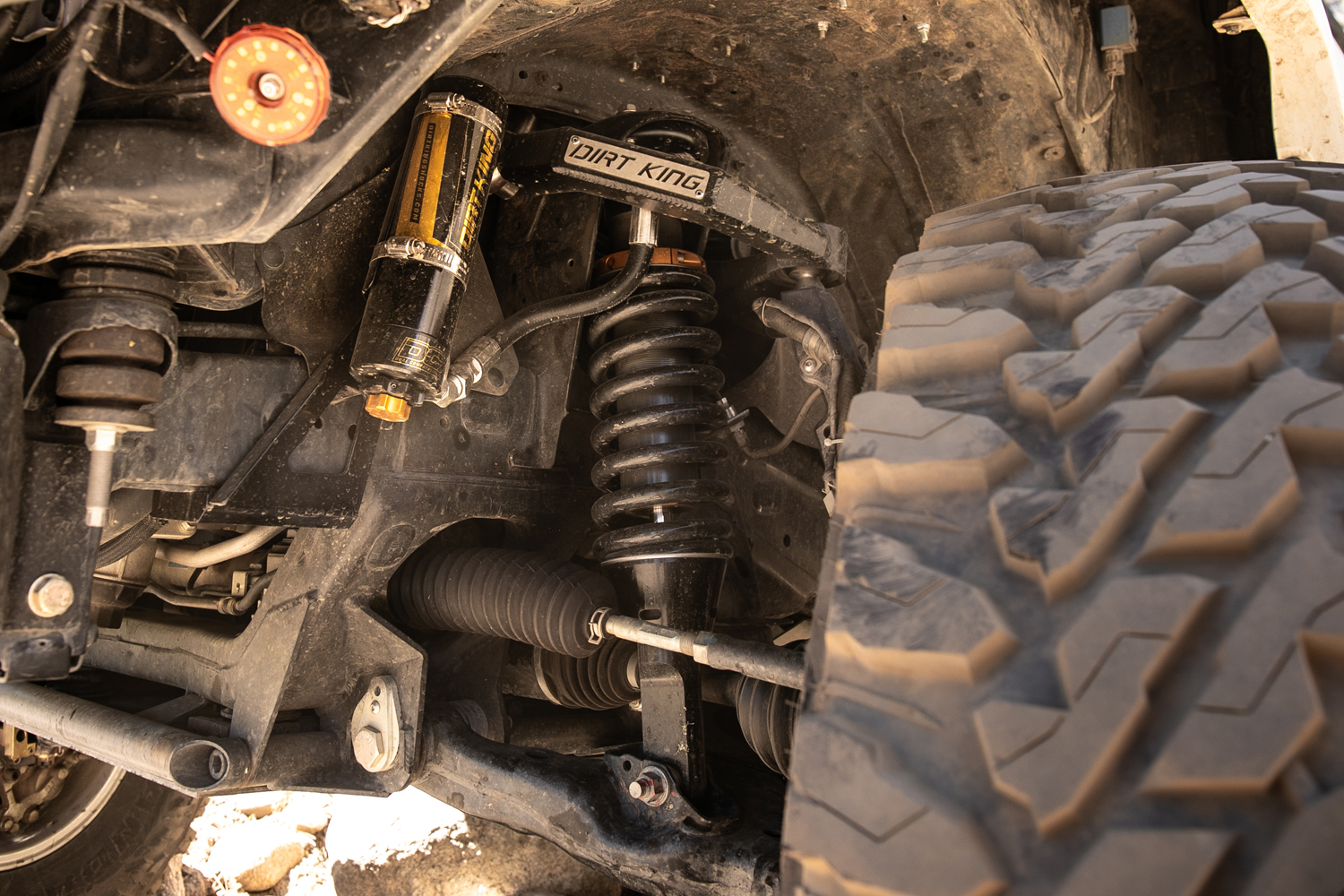
Lastly, let’s look at build quality.
We covered this in detail in our previous post, but worth mentioning here as well.
The DK 2.5 DCA shock body is hard anodized aluminum which is corrosion-resistant and dissipates heat much better than steel. Other manufacturers like Fox and King feature zinc-plated steel which corrodes over time causing rust on the shock body.
Dirt King shocks also feature improved seal materials which enhance durability and longevity. If you live in a location prone to severe elements like salt and extreme moisture, a hard-anodized aluminum shock body with high-quality seals is the way to go.

How do they compare to King Shocks 2.5’s? You mentioned in your article that they’re similar but what do you think is the better shocks overall?
Dirt King VS. Everyone! Lol.
Another well written review! Do these Dirt Kings have an internal bump zone?
Our shocks do not have an internal bump zone. Although the design is superior it adds substantial cost so we took the approach of spending a lot of time tuning to provide the balance of value and performance.